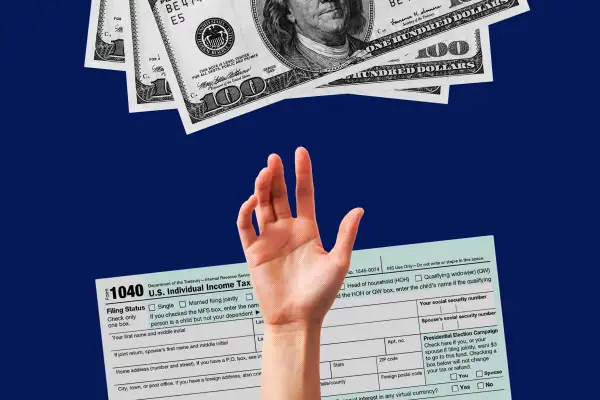Have You Filed Taxes Yet? So Far, Refunds Are $300 Higher This Year

If you’ve filed your taxes already, you may have received a pleasant surprise in the form of a refund that was much larger than you expected.
As of the week ending March 25, 2022, the IRS had processed nearly 58 million refunds worth a cumulative $188.7 billion. The average refund so far is worth $3,263 — a bump of more than $300 over the average refund of $2,902 during the same week in 2021. For the entire 2021 tax filing season, the average refund was $2,815.
A recent survey by IPX1031, a subsidiary of Fidelity National Financial, found that on average, Americans expect a tax refund of $1,915 in 2022. This means that for many, tax refunds right now are far exceeding expectations.
In a year when returns are more important than ever for families thanks to a high rate of inflation, soaring gas prices, the expiration of the expanded child tax credit and the expected return of federal student loan payment requirements, that’s a big deal. A 2022 survey conducted by the National Retail Federation found that 51% of people who expect to receive a refund this year plan to use it to bolster their savings, compared to 43% of people who said the same thing last year.
It’s worth remembering that the filing season in 2022 started several weeks earlier than it did in 2021 and that people who anticipate large refunds tend to file their taxes earlier than those who don’t. There are still a few more weeks before Tax Day, so it’s not yet clear what the average refund for the entire 2022 season will be.
Why your tax refund may be bigger this year
Last year brought a raft of changes to the tax code that may boost your refund this spring.
One major change was to the child tax credit, which was expanded as part of the American Rescue Plan. Even though millions of families received half the credit as advanced monthly payments in the second half of last year (which would theoretically reduce the size of refunds), the maximum value of the credit was increased from $2,000 to $3,000 for kids between the ages of 6 and 17 and $3,600 for kids aged 5 and under. Plus, families who opted out of the advance payments or welcomed a new child last year could see the entire credit paid out in their refunds this year.
Eligibility for the earned income tax credit was also expanded by the American Rescue Plan, which means more low- to moderate-income workers will see money from that credit in their refunds. Taxpayers might also see extra money from the recovery rebate credit — the third stimulus check that went as an advance payment for millions of Americans last March.
If your income fell in 2021, you gained a dependent or lost your own dependent status, you could see even more stimulus money in your refund.
How to track your tax refund
If you’re eagerly awaiting your refund check or direct deposit, you can use the IRS’s Where’s My Refund tool or the IRS2Go app to track your refund status. The agency says it issues most refunds within 21 days, but has warned that it could take between 90 and 120 days to process returns that claim the recovery rebate credit, earned income tax credit and additional child tax credit for 2021.
And if you haven’t filed your taxes yet, make sure to do so as soon as possible. The tax deadline is April 18 for most Americans, but filing ahead of that date will give you the best possible chance of a speedy turnaround.
More from Money:
Here's How to Track Your Tax Refund
7 Big Tax Changes That Could Affect Your Return — and the Size of Your Refund


